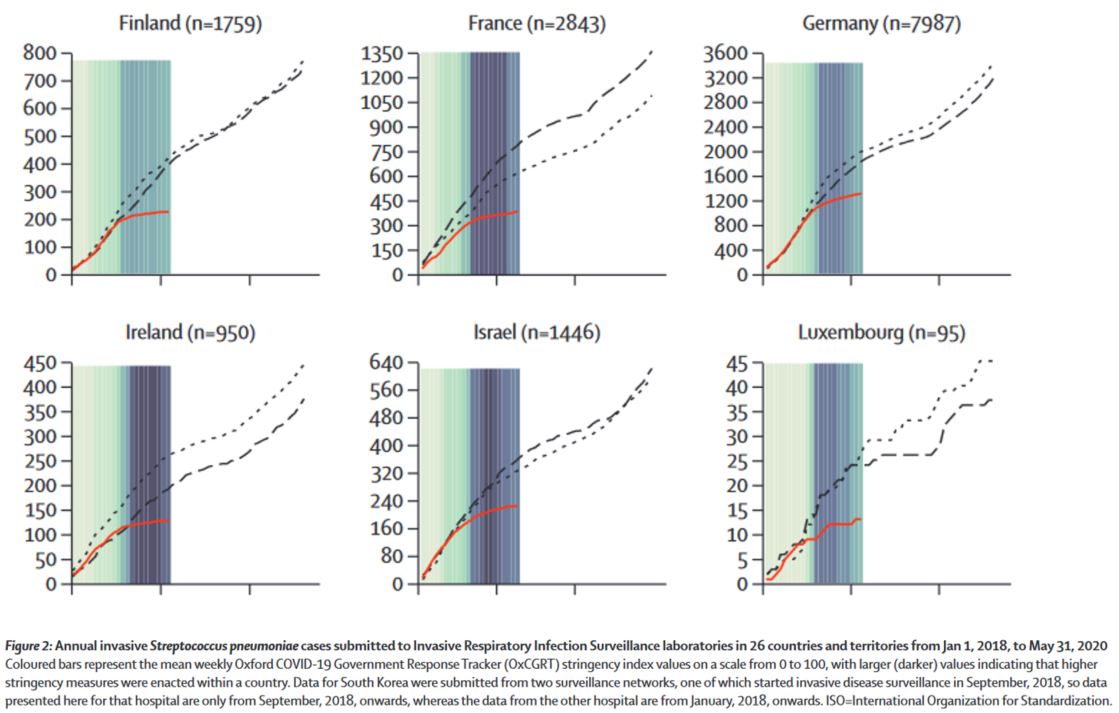

Dr Monique Perrin and Dr Alexandre Mzabi from the LNS Department of Microbiology participated in an international study, which suggests COVID-19 lockdowns reduced the spread of deadly invasive bacterial diseases – potentially saving thousands of lives. The study was led by Angela Brueggemann, Professor of Infectious Disease Epidemiology at the University of Oxford’s Nuffield Department of Population Health.
Diseases caused by invasive bacteria, including pneumonia, meningitis, and sepsis, are leading causes of illness and death worldwide, especially among children and older adults. These pathogens are typically transmitted person-to-person via the respiratory route. In 2016 alone, 336 million episodes of invasive lower respiratory infections occurred worldwide, leading to 2.4 million deaths.
Until now, it has been unclear how the COVID-19 pandemic affected the transmission and incidence of these bacterial diseases. Viral respiratory infections (such as SARS-CoV-2) are associated with an increased risk of subsequent bacterial infections, particularly pneumonia. On the other hand, the national lockdowns and public health campaigns introduced at the start of the pandemic may have reduced the transmission of bacteria that cause respiratory infections. This has now been conclusively demonstrated in a new international study involving the Luxembourg via the Laboratoire national de santé. The results have just been published in The Lancet Digital Health.
https://www.thelancet.com/journals/landig/article/PIIS2589-7500(21)00077-7/fulltext
The researchers compared the number of infections reported for three bacteria, Streptococcus pneumoniae, Haemophilus influenzae and Neisseria meningitidis, during the COVID-19 pandemic with the rates from previous years. Together, these bacterial species are the most common causes of meningitis, pneumonia and sepsis. Data were sourced from national laboratories and surveillance programmes from 26 countries and territories, spanning six continents. In addition, the researchers investigated whether the timing of any changes in the number of disease cases coincided with the introduction of national COVID-19 containment measures and reductions in people’s movements.
Key results:
• All countries saw a significant and sustained reduction in invasive bacterial infections between January and May 2020 (around 6000 fewer cases of invasive disease than expected), compared with the previous two years. For Streptococcus pneumoniae, infections decreased by 68% at four weeks after COVID-19 containment measures were imposed, and by 82% at eight weeks.
• The decrease in infections followed the introduction of national COVID-19 containment policies and a significant reduction in people’s movements in all countries, regardless of how stringent the COVID-19 containment measures were. The model found little evidence for any specific impact from school closures.
• In contrast, the number of infections caused by an invasive but non-respiratory bacterial species (Streptococcus agalactiae) did not decrease, demonstrating that disease reporting methods had not been significantly disrupted by COVID-19.
According to the researchers, the most plausible explanation for the observed reduction was the interruption of person-to-person bacterial respiratory transmission, rather than disruption of medical care or disease reporting. Invasive infections are medical emergencies and are notifiable by law in the majority of countries in this study.
The investigators stress that this underlines the importance of reducing transmission of respiratory bacteria, and ensuring that any disruptions to vaccination programmes that protect against diseases caused by these bacteria are urgently addressed, particularly as COVID-19 restrictions are relaxed.
This study is part of the Invasive Respiratory Infection Surveillance (IRIS) Initiative: a new international network of national laboratories and surveillance programmes, that have systematically collected microbiological data for many years.
For this investigation, the researchers analysed data on national COVID-19 policies and containment measures using the Oxford COVID-19 Government Response Tracker. This includes measures such as workplace and school closures, travel restrictions, ‘stay at home’ messages, and cancellation of public events. Information on people’s movements was sourced from Google COVID-19 Community Mobility Reports, which captures mobile device location history data from Google users. The study utilised the PubMLST.org platform, housed in the Department of Zoology at Oxford.